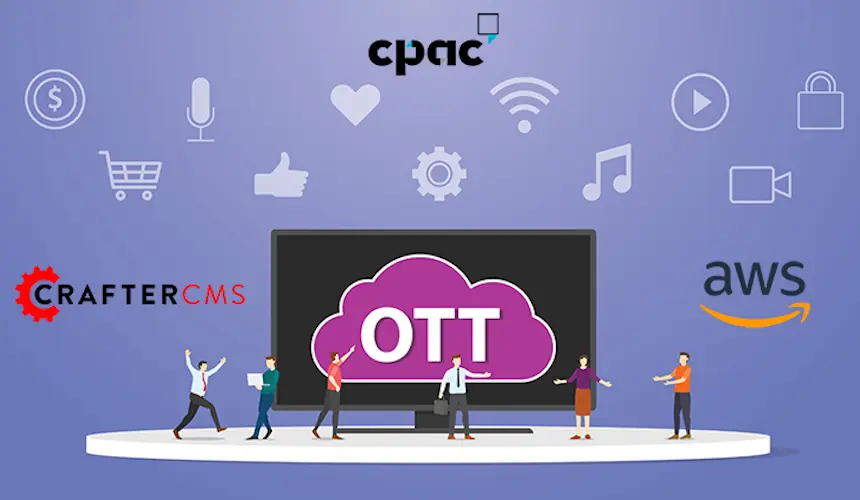What is Amazon EKS?

Sara Williams

Enterprise businesses have been rapidly adopting the cloud and various cloud services to modernize their workloads and increase their agility and scalability. Through concepts like containerization and orchestration, companies have found ways to make applications more portable, increase efficiency and address challenges surrounding the deployment of code.
Amazon Web Services (AWS), the global leader in cloud computing with 33% of market share, offers a variety of cloud services, including Amazon Elastic Kubernetes Service (Amazon EKS), a fully managed Kubernetes service.
Running Kubernetes in AWS was once a challenge due to several manual configurations which required extensive operational expertise and effort. With EKS, Amazon solved that problem. Now, EKS can be used for a variety of use cases, including web applications that are powered by headless CMS like Crafter.
Dissecting Containerization and Kubernetes Orchestration
First of all, before diving into Amazon EKS, let’s go over containerization, orchestration and Kubernetes.
What is Containerization?
A popular trend in software development and deployment, containerization involves the packaging of software code so that it can run uniformly and consistently on any infrastructure.
Containerization enables developers to build and deploy applications faster and with more security. Traditionally, code is developed in a specific environment. When moves to different environments happen, bugs can be introduced.
With containerization, this problem is removed since application code, configuration files and dependencies required for the code to run are all bundled together. This container can stand alone and run on any platform or in the cloud.
What is Orchestration?
Orchestration helps IT operations manage complex tasks and workflows by automatically configuring, managing, and coordinating applications systems and services.
When ops have to manage multiple servers and applications, orchestration helps to combine multiple automated tasks and configurations across groups of systems.
What is Kubernetes?
Kubernetes is an open source container-orchestration system that enables teams to deploy, scale and manage containerized applications. It handles the scheduling of containers in a cluster and manages workloads so that everything runs as intended.
Kubernetes was designed for software development teams and IT operations to work together, so it allows for easy adoption of GitOps workflows.
Kubernetes also manages clusters of Amazon EC2 instances and runs containers on those instances. With Amazon EKS, AWS makes it easy to run Kubernetes in the cloud.
Digging Deeper with Amazon EKS
EKS offers the best way to run Kubernetes for a number of reasons and takes away the manual effort that development teams once had to go through in setting up Kubernetes clusters on AWS.
You can run your EKS clusters using AWS Fargate; a serverless computer for containers that removes the need to provision and manage servers and leverages application isolation by design to improve security.
EKS deeply integrates with other AWS services such as CloudWatch, AWS Identity and Access Management (IAM), and Amazon Virtual Private Cloud (VPC). These services supply a seamless experience that enables you to monitor, scale and load-balance applications.
EKS also provides a highly-available and scalable control plane that runs across multiple availability zones, eliminating any single points of failure.
EKS Benefits
The Kubernetes Community
Applications managed by EKS are fully compatible with those managed by a standard Kubernetes environment. That’s because EKS runs upstream Kubernetes and is also a certified Kubernetes conformant.
Since Kubernetes is open source, the community contributes code to its ongoing development, along with AWS’s contributions as part of that community.
High Availability
The Kubernetes management infrastructure is run by EKS across multiple AWS Availability Zones. This allows EKS to automatically detect unhealthy control plane nodes and replace them and also leads to on-demand, zero downtime upgrades and security patches.
Security
The latest security patches are automatically applied to the cluster control plane. Plus, AWS leverages and coordinates with the EKS community to make sure critical issues are resolved before any new releases are deployed to existing clusters.
EKS Use Cases
Hybrid Deployment
EKS can be used on AWS Outposts to run low latency containerized applications to on-prem systems. AWS Outposts is another fully managed service from Amazon that extends AWS infrastructure, services, tools and APIs to essentially any connected site.
EKS on Outposts allows you to manage on-premise containers just as easily as if you were managing containers in the cloud.
Batching Processing
Run sequential or parallel batch work on an EKS cluster by using the Kubernetes Jobs API. EKS will allow you to plan, schedule and execute batch workloads across the range of AWS compute services and features whether you’re using EC2, Fargate or Spot Instances.
Web Apps
Build web applications that can scale up and down automatically and run in a highly available configuration across multiple Availability Zones. When using EKS, web apps can leverage the performance, scalability, availability and reliability benefits of AWS.
Amazon EKS for Content Management
With EKS, Amazon has made it easier for organizations to deploy cloud-native applications. Having a cloud-native CMS, for instance, allows organizations to leverage the benefits of containers and apply them to running a content management system and CMS-driven web and mobile apps.
As companies look for ways to improve the digital customer experience by publishing content to multiple channels, a cloud-native CMS can help in a number of ways.
It allows for lower upfront costs compared to on-premise solutions, more accessibility for content authors at any time and on any device, developer-friendly tools and services, and the capacity to scale as required.
Amazon EKS allows enterprises to deploy cloud-scalable CMS environments and serverless digital experience applications quickly and cost effectively.
CrafterCMS: Built for Amazon EKS
Crafter’s headless CMS platform is built for organizations to be able to create and deliver content to any channel and connect with visitors across several digital touchpoints. Content authors get user-friendly tools to craft the best digital experiences for their audience, and developers can build those experiences using their preferred tools, frameworks, and workflows.
For enterprises looking for a fully-managed, SaaS CMS, they can utilize Crafter Cloud, which leverages AWS and Amazon EKS to provide a serverless, elastically scalable CMS solution.
For enterprises looking to build, deploy, and self-manage CrafterCMS on AWS, Crafter provides the configuration scripts to automate the deployment and management using Amazon EKS under open source license.
In either case, CrafterCMS offers enterprises a modern, cloud-native and serverless CMS solution.
Learn more about CrafterCMS and AWS in our White Paper: Choosing a CMS for Building Content-Driven Sites and Apps on AWS.
Related Posts

Websites Are Dead?

Mike Vertal

No-Code Experience Building for Marketers & Designers

Amanda Lee

Is Your CMS MACH-Ready? A Practical Guide for Enterprise Architects

Sara Williams

Composable DXP vs Traditional DXP: Why Enterprises Choose CrafterCMS

Amanda Jones
Related Resources
-

CrafterCMS at eBay: The Universal Content Platform for eBay.com
Webcast
-

Personalized Digital Experiences for a Cruise Liner
Webcast
-

Introducing CrafterCMS v4.0
Webcast
-

Modernizing Video Delivery and Content Management at CPAC, A Canadian Nationwide Broadcaster
Webcast
-

AI-based Media Asset Management with AWS Rekognition and CrafterCMS
Webcast





